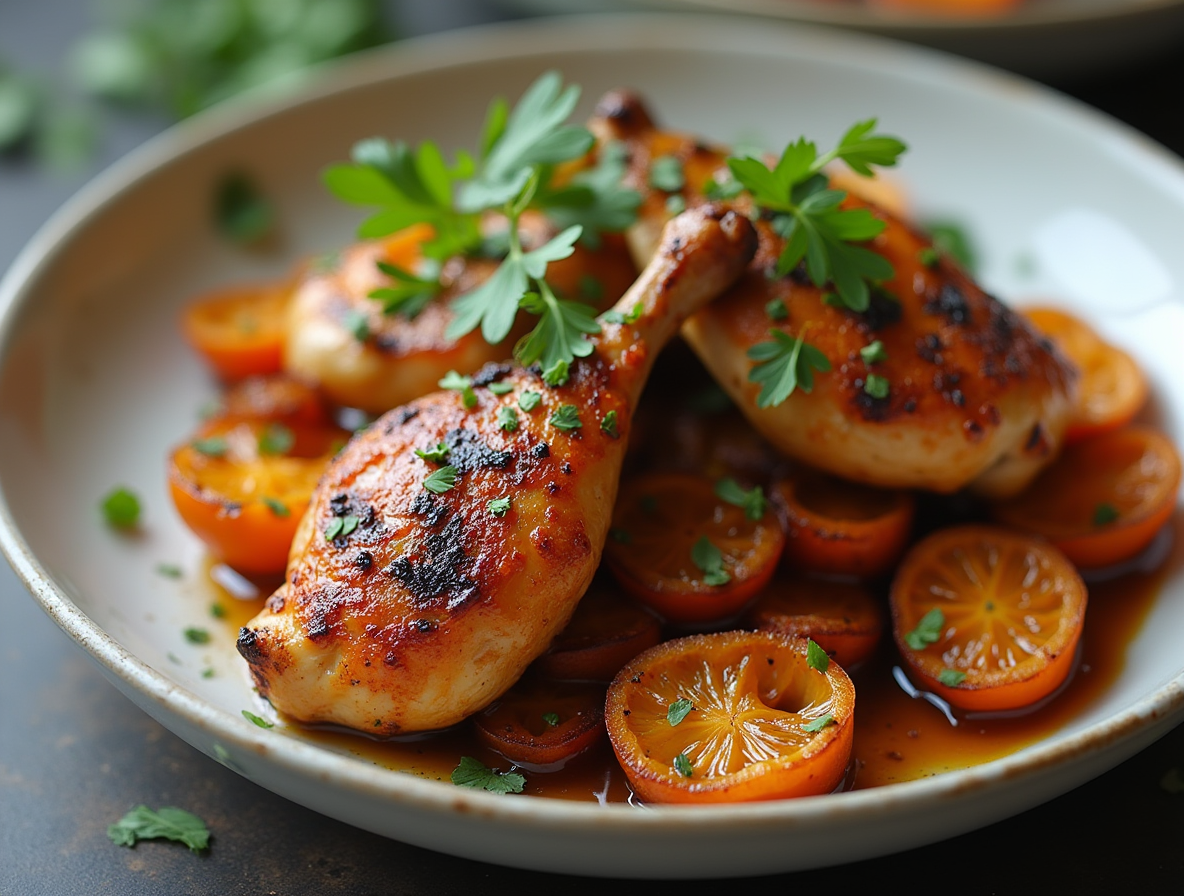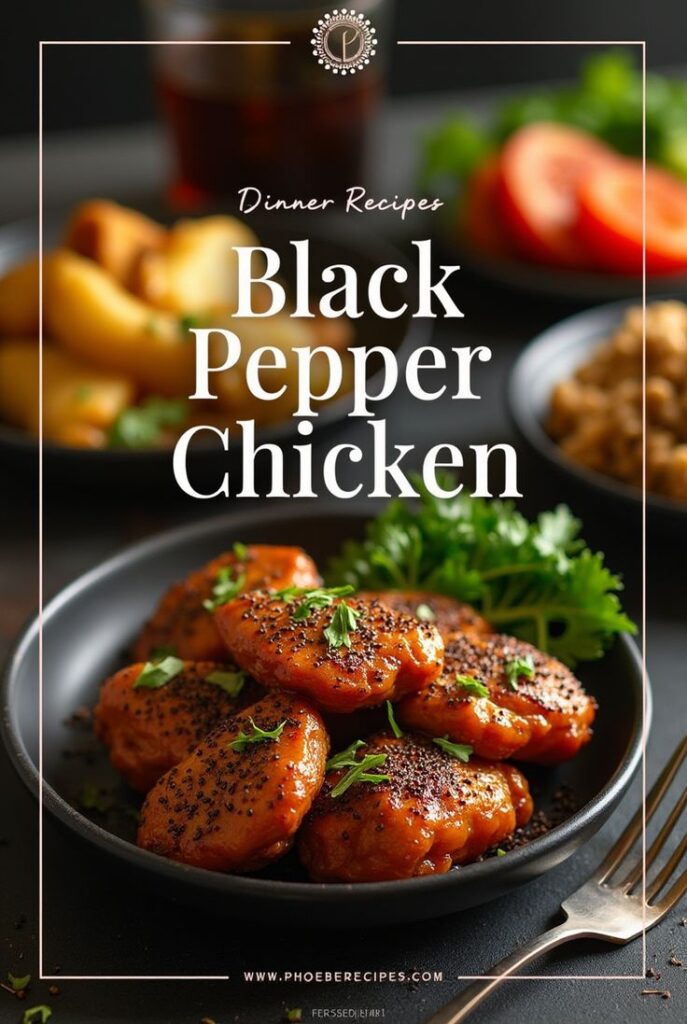How to Make Chinese Black Pepper Chicken: Better Than Takeout Recipe
Did you know Chinese black pepper chicken can be prepared in less than 30 minutes? This makes it perfect for those busy weeknights when we crave takeout but don’t want to wait for delivery.
Unlike traditional Chinese cooking that typically favors white pepper, black pepper chicken is a Chinese American creation that delivers bold, comforting flavors. When learning how to make black pepper chicken at home, you’ll discover it’s loaded with healthy lean protein and colorful vegetables. In fact, the average serving contains approximately 269 calories with an impressive 26.1g of protein. The black pepper chicken stir fry combines tender chicken pieces with bell peppers and celery, all coated in a delicious black pepper chicken sauce made from oyster sauce, soy sauce, and other aromatics. Additionally, making it yourself means you can control the ingredients, resulting in a meal that’s not just tastier but also healthier than your usual takeout option.
Better yet, this one-pot meal allows us to enjoy all the flavors we love from places like Panda Express, but with our own homemade touch. Let me show you how to create this crowd-pleasing dish that will have everyone asking for seconds!
Get to Know Black Pepper Chicken
Black pepper chicken stands as a distinctive creation in Chinese-American cuisine, characterized by its bold peppery flavor profile. While many traditional Chinese dishes use minimal seasoning to highlight natural ingredients, this stir-fry intentionally showcases the aromatic intensity of coarsely cracked black peppercorns.
What makes it different from other stir-fries
Chinese black pepper chicken differs from typical stir-fries through its signature sauce. The base combines essential aromatics like onion and garlic with light soy sauce, dark soy sauce, and sometimes oyster sauce, all thickened with starch. This creates a savory brown sauce that perfectly complements the distinctive black pepper heat.
The preparation method further distinguishes this dish. Instead of quick-cooking small pieces, the chicken is often cut into larger bite-sized chunks to prevent drying out. Furthermore, marinating the chicken with salt, pepper, and starch ensures it remains tender and juicy throughout the cooking process.
Another distinctive element is the vegetable selection. While many Chinese stir-fries feature a variety of vegetables, black pepper chicken typically showcases a simple trio of bell peppers, onions, and sometimes celery. This focused approach allows the peppery sauce to remain the star.
Notably, despite containing significant amounts of black pepper, the dish isn’t overwhelmingly spicy. Instead, it delivers a rich, savory experience with a pleasant peppery warmth.
Black pepper vs. white pepper in Chinese cooking
Though they come from the same plant (Piper nigrum), black and white peppercorns undergo different harvesting and processing methods, resulting in distinct flavor profiles.
White pepper, or bái hújiāo (白胡椒) in Chinese, dominates traditional Chinese cooking. It’s made by harvesting fully ripened berries, removing their outer skin, and then drying them. The resulting peppercorns have a clean, pure heat without the complex aromatic qualities of black pepper.
Black peppercorns, conversely, come from unripe green berries that are cooked and then dried whole. This process preserves the berry’s outer layer, creating a more complex, floral aroma. While less common in authentic Chinese cuisine, black pepper provides a distinctive character to this Chinese-American creation.
The choice between these peppers significantly impacts a dish’s flavor profile:
- White pepper: Delivers pure, sharp heat; preferred in traditional Chinese cooking, especially seafood dishes and soups
- Black pepper: Provides complex, floral notes with aromatic qualities; the star ingredient in black pepper chicken
Chinese cooks traditionally use white pepper to avoid visually disrupting a dish’s appearance with dark specks, especially in light-colored preparations. However, black pepper chicken intentionally celebrates the unique qualities of black pepper, making it stand out in Chinese-American cuisine.
Prepare Before You Cook
Success with Chinese black pepper chicken begins long before you turn on the stove. Proper preparation ensures your homemade version rivals any restaurant offering.
Essential ingredients and pantry staples
Creating authentic black pepper chicken requires several key Chinese ingredients. First, gather both light and dark soy sauce—they serve different purposes. Light soy sauce provides saltiness and umami, whereas dark soy sauce contributes rich color and deeper flavor. You’ll certainly need oyster sauce, which adds distinctive savory sweetness that defines the dish.
Additionally, Shaoxing wine (or dry sherry as a substitute) brings complexity and depth. Cornstarch serves multiple roles—thickening sauces and tenderizing meat. For the signature flavor, coarsely ground black pepper is essential, as pre-ground versions lack the necessary intensity.
Other pantry necessities include neutral cooking oil with a high smoke point, sesame oil for finishing, and chicken broth.
How to marinate chicken for tenderness
Marinating the chicken properly, sometimes called “velveting,” creates restaurant-quality tenderness. Slice boneless chicken breasts or thighs against the grain into 1/4-inch thick pieces. Subsequently, combine the chicken with a mixture of soy sauce, Shaoxing wine, and cornstarch.
A crucial technique involves adding 2-3 tablespoons of water to 12-16 ounces of chicken. Gently massage this mixture into the meat until well-coated. The water moisturizes the chicken while helping the soy sauce penetrate deeper. Let it sit 5-10 minutes until most liquid absorbs.
Finally, incorporate cornstarch and oil, creating a protective coating that seals in moisture. Allow the chicken to marinate for 15-20 minutes before cooking.
Prepping vegetables and aromatics
Meanwhile, prepare your vegetables. Traditional black pepper chicken typically includes bell peppers (any color), onions, and celery. Cut vegetables into similar-sized pieces to ensure even cooking.
For aromatics, finely chop garlic and mince fresh ginger. These form the essential flavor foundation alongside scallions in what’s considered the “holy trinity” of Chinese cooking.
Mixing the black pepper chicken sauce
Prior to cooking, combine sauce ingredients in a small bowl. A basic black pepper sauce includes chicken broth, light and dark soy sauce, oyster sauce, Shaoxing wine, sugar, and cornstarch. Most importantly, add 1½-2 teaspoons of freshly cracked black pepper.
Mix thoroughly until the cornstarch dissolves completely, ensuring a smooth, lump-free sauce. Keep the sauce nearby with a small spoon for stirring again just before adding to the pan.
Step-by-Step Cooking Process
The real magic of Chinese black pepper chicken happens at the stove where quick cooking transforms simple ingredients into a restaurant-worthy dish. Once your ingredients are prepped, the actual cooking process takes less than 10 minutes.
Sear the chicken for a crispy edge
Heat your wok or large skillet over high heat until it begins to smoke lightly. Add 2 tablespoons of oil and spread it to coat the surface evenly. Place your marinated chicken in a single layer and let it sear undisturbed for about 20-30 seconds. This initial searing creates a protective crust that seals in moisture.
After the initial sear, stir-fry the chicken until it’s about 80-90% cooked through – this typically takes just 2-3 minutes. The chicken should be opaque on all sides but not fully cooked. Remove it from the wok and set aside temporarily. Remember, you’ll finish cooking it later, so avoid overcooking at this stage.
Stir-fry vegetables quickly over high heat
Without washing the wok, return it to medium-high heat and add another tablespoon of oil. Add your aromatics first – typically garlic and onions – and stir-fry for about 20 seconds until fragrant. Next, add the Shaoxing wine around the perimeter of the wok to deglaze and capture all those flavorful bits from the chicken.
Now add your bell peppers and celery, along with 1 teaspoon of black pepper. Stir-fry for just 30 seconds – vegetables should remain crisp and bright. The quick cooking at high heat preserves their texture and nutritional value.
Add sauce and simmer until thickened
Pour your prepared sauce mixture into the wok. Use your spatula to stir the sauce around the sides of the wok to deglaze any remaining bits. Allow the sauce to come to a simmer.
Next, stir up your cornstarch slurry again (it settles quickly) and drizzle it into the simmering sauce while stirring constantly. Let the sauce simmer for 10-15 seconds until it develops a thick, gravy-like consistency.
Combine everything and finish cooking
Return the seared chicken and any accumulated juices back to the wok. Stir-fry everything together until the chicken is fully coated in sauce and completely cooked through, about 1-2 minutes.
At this point, make any final adjustments to your dish. If you prefer a darker sauce, add a dash more dark soy sauce. If the sauce seems too thick, add a splash of chicken stock or water; if too thin, add more cornstarch slurry. Taste and adjust seasoning as needed before serving immediately.
Tips, Variations, and Storage
One fantastic aspect of preparing Chinese black pepper chicken at home is the ability to customize it to suit your preferences. With a few simple adjustments, you can transform this classic stir-fry into a dish that perfectly matches your taste.
How to adjust spice and sweetness
The signature black pepper flavor can be easily modified according to your spice tolerance. For milder flavor, start with half the amount of black pepper and taste before adding more. Alternatively, if you enjoy heat, increase the pepper amount for a fiery kick. Some chefs recommend using freshly ground black peppercorns for deeper flavor compared to pre-ground options.
Regarding sweetness, several options exist beyond traditional sugar. Honey provides a natural sweetness that balances the pepper’s heat nicely. Other alternatives include date syrup, brown sugar, or coconut sugar for those avoiding refined sweeteners. Additionally, adding a small amount of vinegar—ideally Chinese Chinkiang vinegar—creates a pleasing tangy-sweet balance.
Make it gluten-free or vegetarian
Creating a gluten-free version is straightforward. Simply substitute regular soy sauce with tamari or certified gluten-free soy sauce that contains no wheat. For the thickener, arrowroot starch makes an excellent cornstarch alternative.
To make vegetarian black pepper “chicken,” firm tofu works wonderfully as a protein substitute. First, press the tofu between heavy plates for about 10 minutes to remove excess moisture before cutting into cubes. Alternatively, seitan or black beans can create different but equally delicious variations.
Vegetable options are equally flexible—try broccoli, snow peas, mushrooms, or diced carrots instead of the traditional bell peppers and celery.
Storing and reheating leftovers
Properly stored leftovers keep remarkably well. Store cooled black pepper chicken in airtight containers in the refrigerator for 3-5 days. For longer storage, freeze portions for up to 3 months.
When reheating, microwave individual portions for approximately one minute, checking at 20-second intervals thereafter to prevent overcooking. For superior texture, reheating in a skillet over medium heat works exceptionally well, occasionally adding a splash of water if the sauce has thickened too much.
For convenient meal prep, partially prepare components ahead of time—marinate chicken, mix sauce, and chop vegetables separately, storing them in the refrigerator until ready to cook.
Conclusion
Mastering Chinese black pepper chicken certainly transforms ordinary weeknight dinners into restaurant-quality experiences. Throughout this guide, we’ve explored how this Chinese-American creation differs from traditional stir-fries, primarily through its bold use of black pepper instead of the white pepper typically found in authentic Chinese cuisine. Therefore, you now have all the essential techniques to create this flavorful dish at home—from properly marinating chicken for maximum tenderness to achieving that perfect sauce consistency.
Above all, the beauty of homemade black pepper chicken lies in its versatility. Whether you prefer extra spice, need a gluten-free option, or want a vegetarian version, the recipe adapts easily to your dietary requirements. The dish also comes together in less than 30 minutes, making it faster than ordering takeout. Additionally, by controlling the ingredients yourself, you create a healthier meal without sacrificing any of the bold flavors you crave.
Overall, this humble stir-fry demonstrates how simple techniques and readily available ingredients can produce truly impressive results. The next time you reach for that takeout menu, remember how quickly you can whip up this satisfying dish instead. We encourage you to experiment with different vegetable combinations or protein substitutions to make this recipe uniquely yours. The perfect black pepper chicken awaits in your kitchen—not at the restaurant!
FAQs
Q1. What makes Chinese black pepper chicken unique? Chinese black pepper chicken is distinct for its bold use of black pepper, which is uncommon in traditional Chinese cuisine. It features a savory brown sauce made with soy sauce, oyster sauce, and aromatics, complemented by tender chicken pieces and crisp vegetables like bell peppers and celery.
Q2. How can I ensure my chicken stays tender in this dish? To achieve tender chicken, marinate sliced chicken pieces in a mixture of soy sauce, Shaoxing wine, and cornstarch. Add a small amount of water and gently massage the marinade into the meat. Let it sit for 15-20 minutes before cooking to seal in moisture and enhance tenderness.
Q3. Can I make this dish gluten-free or vegetarian? Yes, you can easily adapt this recipe. For a gluten-free version, use tamari or certified gluten-free soy sauce. To make it vegetarian, substitute chicken with firm tofu, seitan, or black beans. You can also experiment with different vegetables like broccoli, snow peas, or mushrooms.
Q4. How spicy is black pepper chicken? While black pepper chicken contains a significant amount of black pepper, it’s not overwhelmingly spicy. Instead, it offers a rich, savory flavor with a pleasant peppery warmth. You can adjust the amount of black pepper to suit your taste preferences.
Q5. How long can I store leftovers and what’s the best way to reheat them? Properly stored in an airtight container, black pepper chicken can be refrigerated for 3-5 days or frozen for up to 3 months. To reheat, microwave individual portions for about a minute, checking at 20-second intervals. For better texture, reheat in a skillet over medium heat, adding a splash of water if needed to prevent drying.


